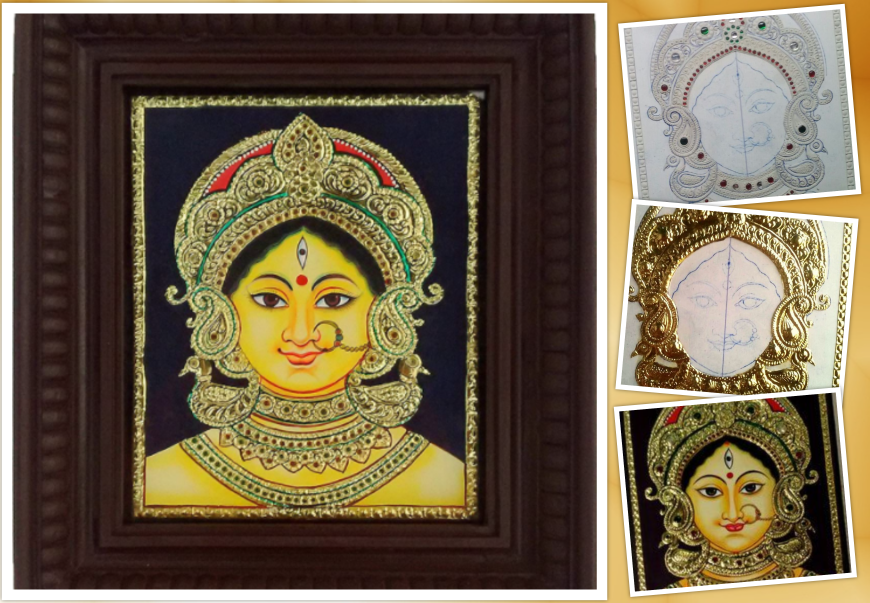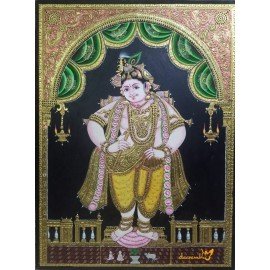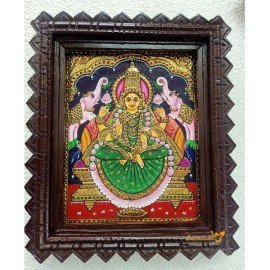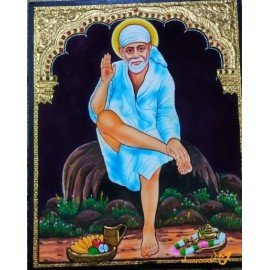Tanjore Painting: The most Authentic and Divine South Indian Art Form

Tanjore Painting: The most Authentic and Divine South Indian Art Form
Historically from the Chola Dynasty to modern days, South India has flourished and preserved various art forms. One among them is Tanjore Paintings which was originated from the town of Tanjavur in Tamil Nadu. Even you will find the reference of Tanjore Painting in the Sanskrit work Prabotha Chandrodayam, Marathi translations of Mahabharath & Bhagavatham, and paintings of Gods & Goddesses are present in "Rig Veda" editions wooden cover.
It is recognized as a Geographical Indication by the Government of India in 2007-08. In Tanjore Paintings, one can see the influence of Deccani, Vijayanagar, and Maratha styles of paintings. These paintings are made up of rich and vibrant colors with glittering gold overlaid on delicate but extensive gesso work. They are also embedded with glass beads and pieces or precious gemstones. The rich surface, dense arrangements, and bright vibrant colors distinguish Tanjore Paintings from other forms.
As you will experience, Tanjore Painting is an exquisite traditional art form and has a rich heritage.
How Tanjore Paintings are made?
Tanjore Paintings are made on canvas, which was initially wood of jackfruit tree, and now plywood is used for the same. A layer of cloth is glued with Arabic gum and then uniformly coated with limestone paste and a binding medium and let it dry. The artist then draws a sketch on the canvas, after that paste made up of limestone and a binding medium is used to decorate the theme. Gold foils and gems of different tones are used in selected areas like pillars, arches, thrones, clothes, etc. The shine of the gold used in the Tanjore Paintings lasts forever. Finally, colors are applied to the sketch. Earlier artists used natural colors like vegetable dyes, whereas the present-day artists use chemical paints, which magnify the sharpness and provide better shade contrasts.
The uniqueness of Tanjore Painting is the marvelous portrayals of the figures, rounded bodies of almost all the figures, almond-shaped eyes, and notable decoration with glass pieces. Experts say that red background is the distinctive mark of Tanjore Paintings, other colors are also used sometimes like green. Mostly lord Vishnu is colored blue, load Nataraja white, yellow is used for goddesses, and for outlines, dark brown is used. There are customs regarding the use of embossing, but nowadays, artists do not follow customs strictly.
Two types of teak wood frames are used in Tanjore Paintings. First, is the plain type of wood, and the other is the Chettinad type which is more decorative with patterns and designs. Instead of breakable glass, a transparent acrylic sheet is used to avoid breakage during transit.
Tanjore Paintings serving as devotional icons, the themes of most paintings are Hindu gods, goddesses, and saints. These paintings have become souvenirs for festive occasions in India, especially in southern states.














Leave your comment
Note: HTML is not translated!